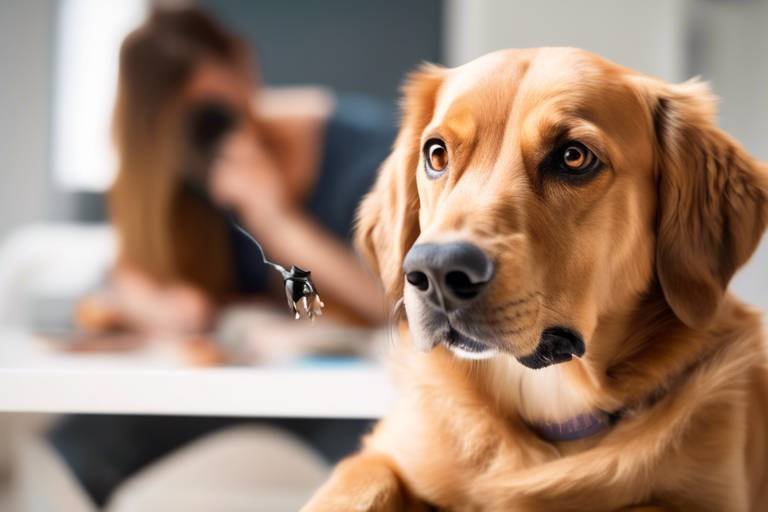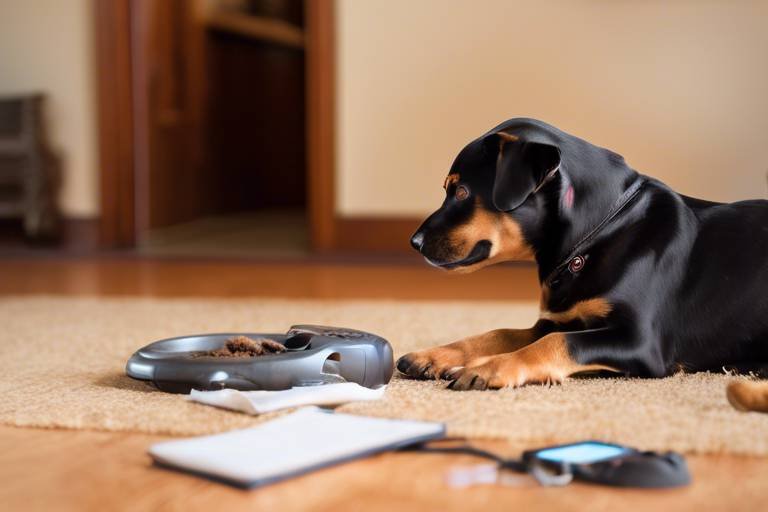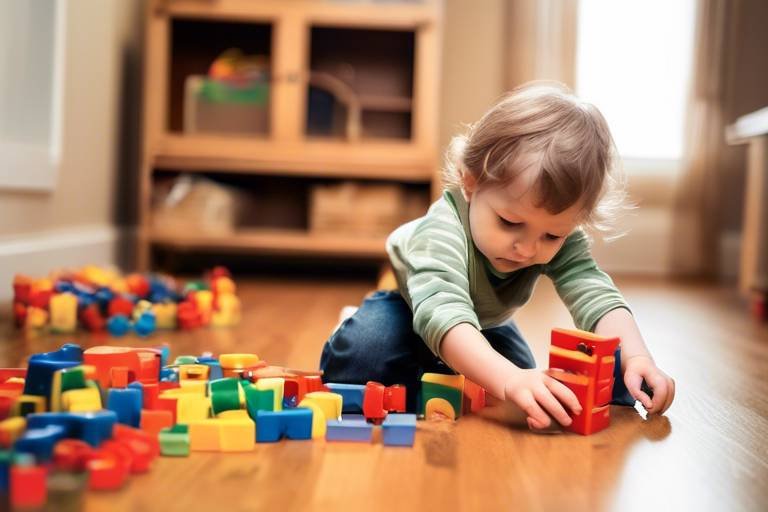Tips for Training Your Dog to Avoid Distractions
Training your dog to avoid distractions is not just about teaching them commands; it’s about building a strong bond and ensuring that they understand what is expected of them in various environments. Imagine trying to have a conversation with a friend while loud music is playing in the background. Frustrating, right? That’s how your dog feels when they’re surrounded by distractions. This article will provide you with practical strategies and techniques to effectively train your dog to remain focused during walks, playtime, and other activities.
Identifying what distracts your dog is crucial for effective training. Distractions can come in many forms, from other animals and people to sounds and smells. For instance, a passing squirrel may send your dog into a frenzy, while the smell of a nearby barbecue could have them distracted for hours. Understanding these distractions helps you tailor your training approach. Here are some common distractions:
- Other dogs
- People, especially children
- Moving vehicles
- Sounds like sirens or fireworks
- Smells from food or other animals
Recognizing these distractions allows you to create a focused training environment. It’s like clearing the clutter from your desk before starting a big project; you need a clean slate to work effectively.
Creating a consistent training routine is fundamental in reinforcing desired behaviors. Just like humans thrive on routine, dogs do too. Regular training sessions help instill discipline and focus. Aim for short, frequent training sessions rather than long, overwhelming ones. For example, a 10-minute session twice a day can be far more effective than a single hour-long session. Structure your routine by incorporating:
- Warm-ups: Start with basic commands to get your dog engaged.
- Main training focus: Introduce new commands or distractions.
- Cool-down: End with a fun activity like playtime or a favorite trick.
By establishing a routine, you provide your dog with a sense of predictability, which can significantly enhance their ability to focus.
Using positive reinforcement encourages your dog to focus on you rather than distractions. Dogs respond better to rewards than to punishment. Think of it as treating a child for good behavior; it’s much more effective than scolding them. Rewards can include treats, toys, or even praise. Here’s how to implement positive reinforcement effectively:
- Timing is key: Reward your dog immediately after they perform the desired behavior.
- Be consistent: Use the same rewards for the same behaviors.
- Gradually reduce treats: As your dog learns, start using treats less frequently, but keep the praise coming.
This technique not only keeps your dog motivated but also strengthens the bond between you two.
Teaching your dog specific commands can help redirect their attention. Commands like “leave it,” “come,” and “focus” are essential tools in your training arsenal. These commands serve as anchors for your dog when distractions arise. When you say “leave it,” for instance, you’re not just telling them to ignore something; you’re giving them a clear direction. Consistent practice in various environments will help your dog learn to respond to these commands even when distractions are present.
Proper socialization plays a key role in minimizing distractions. Exposing your dog to various environments and situations helps them become more adaptable and less reactive. Think of socialization as giving your dog a passport to the world. They need to experience different sights, sounds, and smells to understand that not everything is a threat or a distraction. This can include:
- Taking your dog to dog parks.
- Inviting friends over with their pets.
- Going for walks in busy areas.
By gradually exposing your dog to new experiences, you help them build confidence and learn to focus on you rather than their surroundings.
Introducing distractions gradually can help your dog learn to cope. Start in a controlled environment with minimal distractions and slowly increase the level of difficulty. For example, begin training in your backyard, then move to a quiet park, and eventually tackle busier areas. This step-by-step approach prevents overwhelming your dog and allows them to build their focus incrementally.
Leash training is vital for maintaining control during walks. A well-trained dog on a leash is less likely to be distracted by the world around them. Start by teaching your dog to walk beside you, rewarding them for staying close. If they pull or get distracted, gently guide them back to your side. Techniques such as using a shorter leash or stopping when they pull can reinforce the desired behavior. Remember, a calm dog on a leash is a happy dog!
Tracking your dog's progress is essential for effective training. Keep a journal of your training sessions, noting what works and what doesn’t. This helps you evaluate your dog's behavior and adjust your training methods as needed. If a particular command isn’t resonating, try a different approach. Just like a teacher adapts their lesson plans based on student performance, you should be flexible in your training methods.
Q: How long does it take to train my dog to avoid distractions?
A: The time it takes varies by dog and the level of distractions. Consistency and patience are key.
Q: What if my dog is still distracted despite my training?
A: Consider revisiting the basics and ensuring you’re using effective positive reinforcement techniques.
Q: Can all dogs learn to focus despite distractions?
A: Yes! With the right training methods, most dogs can learn to focus better, although some may take more time than others.
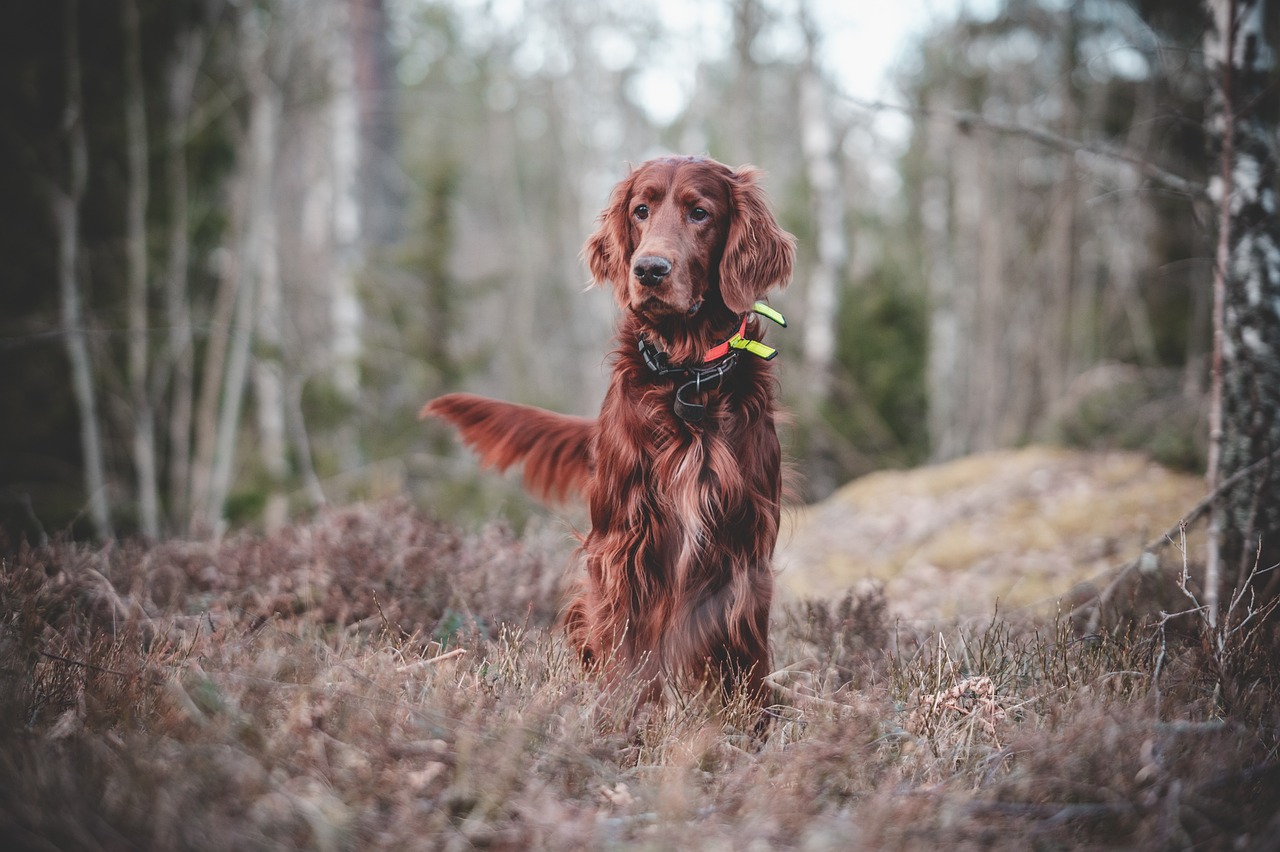
Understanding Distractions
When it comes to training your dog, understanding what distractions can pull their attention away is absolutely essential. Just like humans, dogs can be easily sidetracked by their environment. Imagine trying to focus on a conversation while a loud train passes by or a child is playing nearby; it can be quite challenging! In the canine world, distractions can come in many forms, and recognizing these will help you tailor your training strategies effectively.
Common distractions that you might encounter include:
- Other Animals: Dogs are naturally curious creatures. The sight of another dog, cat, or even a squirrel can send them into a frenzy of excitement.
- People: Whether it’s a friendly neighbor or a jogger, the presence of other humans can capture your dog’s attention, especially if they’re excited or want to greet them.
- Sounds: Loud noises such as traffic, sirens, or even a doorbell can be startling and divert your dog’s focus.
- Smells: Dogs have an incredible sense of smell, and the scent of food, other animals, or even new surroundings can be incredibly distracting.
Each of these distractions can significantly affect your dog's behavior and focus. For instance, if your dog is used to seeing other dogs during walks, they might become overly excited and start pulling on the leash, making it hard for you to maintain control. This is why it's crucial to observe your dog's reactions to different stimuli in their environment.
Understanding the specific distractions that affect your dog will allow you to create a more effective training plan. By identifying these triggers, you can gradually introduce your dog to them in a controlled manner, helping them learn to focus on you instead. Think of it like training for a marathon; you wouldn’t just run a race without building up your stamina first. Similarly, your dog needs to build their ability to concentrate amidst distractions.
In essence, the key to effective training lies in your awareness of these distractions. Are you ready to dive deeper into training techniques that will help your dog stay focused? Let’s explore how to establish a training routine that will set the stage for success!
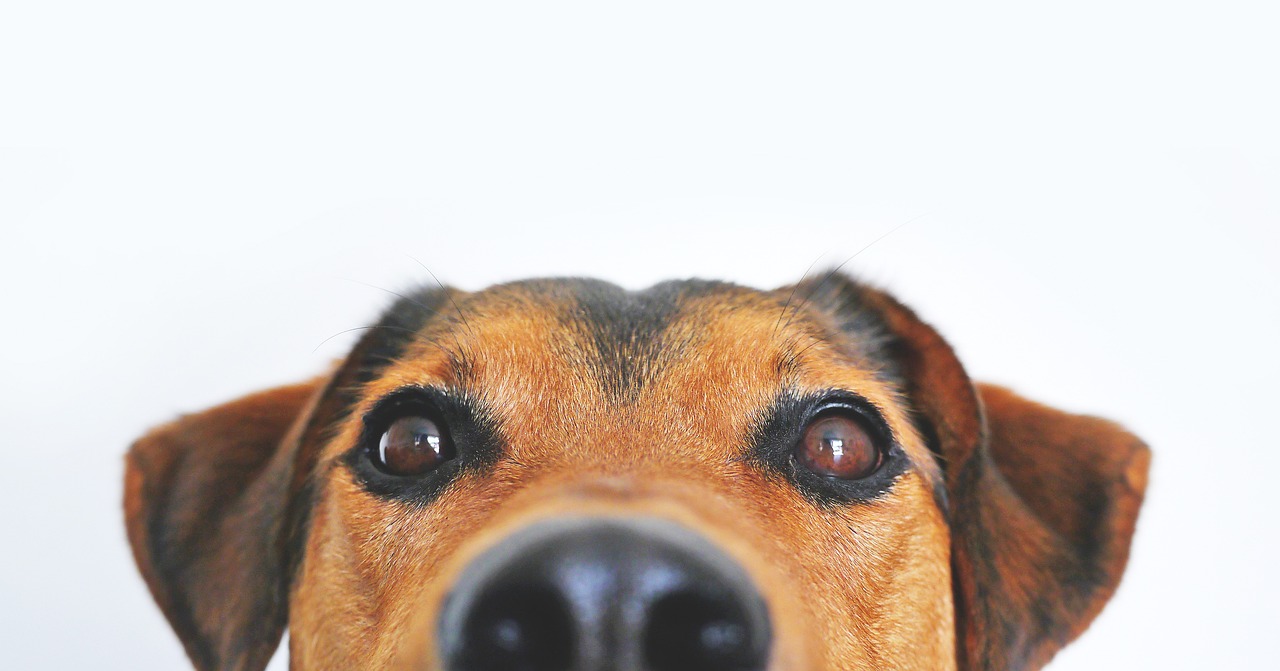
Establishing a Training Routine
When it comes to training your dog, establishing a consistent routine is like laying down the tracks for a train to follow. Without those tracks, the train can go off in any direction, and similarly, without a routine, your dog might get easily distracted and confused. So, how do you create a training routine that works? First, think about the best times of day when both you and your dog are most alert and ready to learn. For many, this might be in the morning or after a brisk walk. Consistency is key; dogs thrive on predictability.
Next, consider the duration of your training sessions. Short, focused sessions of about 5 to 10 minutes are usually the most effective, especially for younger dogs or those with shorter attention spans. Imagine trying to focus on a lecture that lasts for hours—it's tough! The same goes for your furry friend. Keeping sessions brief helps keep their attention and makes each moment count.
Another important aspect is the environment. Choose a spot that’s free from distractions, especially during the initial stages of training. Think of it as creating a quiet study room for your dog. Once they get the hang of things, you can gradually introduce them to more distracting environments, like the park or a busy street. This way, your dog learns to focus on you, even when the world around them is buzzing with activity.
Don’t forget to incorporate a variety of exercises into your routine. Dogs, just like humans, can get bored doing the same thing over and over. Mix in different commands, tricks, and even fun games that require them to think and engage. For example, you might start with basic commands like “sit” or “stay,” and then move on to more complex tricks like “roll over” or “play dead.” This keeps the training fresh and exciting, ensuring that your dog looks forward to each session.
Lastly, track your progress. Just like a student who keeps a journal of their learning journey, you should note down your dog's achievements and areas that need improvement. This not only helps you adjust your training methods but also gives you a sense of accomplishment as you see your dog grow and learn. Remember, patience and persistence are your best friends in this journey!
In summary, establishing a training routine is about consistency, duration, environment, variety, and tracking progress. By following these guidelines, you'll create a positive learning experience for your dog that minimizes distractions and maximizes focus.
- How often should I train my dog? Aim for daily sessions, but keep them short and engaging.
- What if my dog isn’t interested in training? Try using high-value treats or toys to motivate them.
- Can I train my dog at home? Absolutely! Home can be a great environment for training, especially when starting out.
- How do I know if my training routine is effective? Look for signs of improvement in your dog’s focus and response to commands.

Positive Reinforcement Techniques
When it comes to training your dog, positive reinforcement is like the secret sauce that makes everything better. Imagine trying to teach a toddler to clean their room; would you rather bribe them with candy or reward them with praise when they do a good job? The same principle applies to our furry friends! By focusing on rewarding good behavior rather than punishing bad behavior, you create a more motivating and enjoyable training experience for both you and your dog.
So, what exactly does positive reinforcement look like? It can come in many forms, such as treats, praise, or playtime. For instance, if your dog successfully ignores a squirrel while on a walk, you can reward them with a tasty treat or a few enthusiastic words of praise. This not only reinforces the behavior you want to see but also strengthens the bond between you and your dog. It’s a win-win situation!
To effectively implement positive reinforcement, it's crucial to choose the right rewards. Here’s a quick breakdown of some popular options:
- Treats: Small, tasty snacks can be incredibly effective, especially if they are something your dog loves. Just be careful not to overdo it; you don’t want your pup to pack on the pounds!
- Praise: Dogs thrive on attention and affection. A simple “Good boy!” or a scratch behind the ears can go a long way in making your dog feel appreciated.
- Playtime: If your dog is more motivated by fun than food, consider using play as a reward. A game of fetch or tug-of-war can be a great way to reinforce good behavior.
Timing is everything when it comes to positive reinforcement. You want to reward your dog immediately after they exhibit the desired behavior. This helps them make the connection between their action and the reward. For example, if your dog sits on command, give them a treat right away. If you wait too long, they might forget what they’re being rewarded for, and that can lead to confusion.
Another important aspect of positive reinforcement is consistency. Just like a child learning to ride a bike, your dog needs to know that good behavior will always be rewarded. If you occasionally give them a treat for sitting but other times ignore them, it can send mixed signals. To avoid this, establish a clear set of rules and stick to them. This will help your dog understand what behaviors are expected and how they can earn their rewards.
Lastly, remember that positive reinforcement can be a gradual process. Some dogs may catch on quickly, while others might need a bit more time to learn. Be patient and adjust your techniques as needed. If your dog is struggling to focus, consider breaking the training into smaller, more manageable sessions. Short bursts of training can keep your dog engaged and make learning feel less overwhelming.
In conclusion, positive reinforcement is a powerful tool in your dog training arsenal. By focusing on rewarding good behavior and being consistent with your approach, you can help your dog learn to avoid distractions and stay focused. It’s not just about training; it’s about building a deeper connection with your furry friend. So grab those treats, get ready to shower your pup with praise, and watch as they flourish in their training journey!
Q: How do I know what rewards my dog prefers?
A: Every dog is unique! Experiment with different treats, toys, and types of praise to see what excites your dog the most. Pay attention to their reactions and adjust accordingly.
Q: Can I use positive reinforcement for older dogs?
A: Absolutely! Positive reinforcement works for dogs of all ages. In fact, older dogs may respond even better since they often have more experience and understanding of commands.
Q: What if my dog doesn’t respond to rewards?
A: If your dog isn’t motivated by the rewards you’re offering, try switching things up! Some dogs prefer playtime over treats, while others may respond better to verbal praise. It’s all about finding what works for your pup.
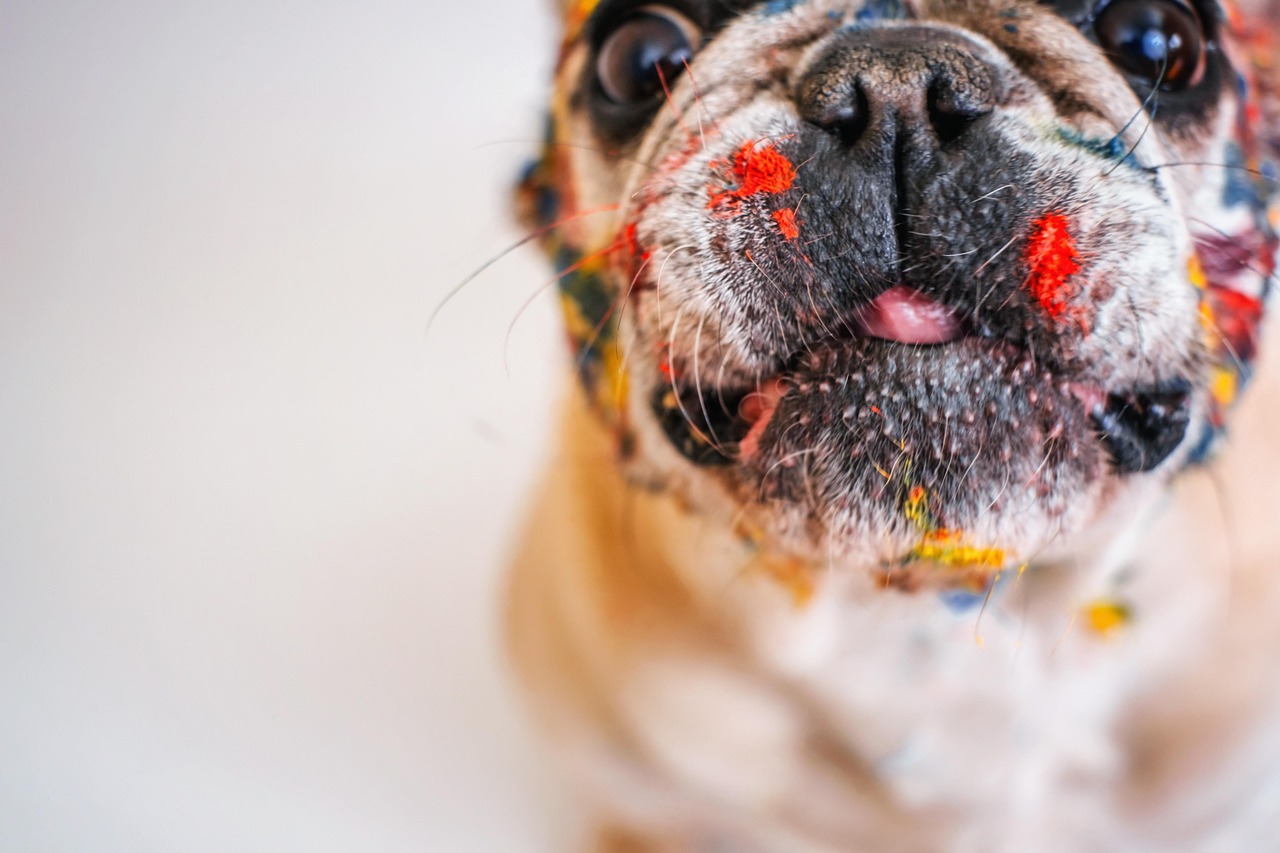
Utilizing Commands Effectively
When it comes to training your dog to stay focused amidst distractions, utilizing commands effectively is like having a secret weapon in your training arsenal. Think of commands as the guiding lights that help your furry friend navigate through the chaos of the outside world. By teaching your dog specific commands, you can redirect their attention and help them ignore those pesky distractions that might otherwise steal their focus. But how do you go about this? Let’s dive in!
First off, it’s essential to choose commands that are easy for your dog to understand and respond to. Commands like "Sit," "Stay," and "Come" are foundational and can be incredibly effective in a variety of situations. For instance, when you’re out for a walk and your dog sees a squirrel darting across the path, a quick "Sit" can help them refocus on you instead of the furry distraction. Imagine being in a crowded room and someone calling your name; you’d likely turn your head, right? That’s the kind of response you want from your dog!
Moreover, consistency is key when utilizing commands. Make sure you use the same word for the same action every time. If you mix up commands or use different words for the same behavior, it can confuse your dog. For example, if you say "Down" one day and "Lie down" the next, your dog might not understand what you want. So, stick to one command and use it consistently. This creates a clear understanding of what you expect from your pup.
In addition to consistency, timing is crucial. You want to give the command at the right moment. If your dog is already distracted and you shout "Come", they might not hear you or might be too focused on whatever has caught their eye. Instead, try to anticipate distractions and give the command before your dog gets too distracted. This proactive approach can help reinforce their focus on you.
Using positive reinforcement alongside commands is another effective strategy. When your dog responds correctly to a command, reward them immediately with treats, praise, or playtime. This not only encourages them to follow your commands but also strengthens the bond between you two. Imagine if every time you did something right at work, your boss rewarded you with a bonus. You’d be more motivated to keep doing it, right? The same goes for your dog!
Here’s a quick table summarizing some essential commands and their uses:
| Command | Use |
|---|---|
| Sit | Helps your dog remain calm and focused. |
| Stay | Prevents your dog from moving towards distractions. |
| Come | Brings your dog back to you when they wander off. |
| Leave it | Teaches your dog to ignore distractions or unwanted items. |
Lastly, practice makes perfect! Regularly incorporate these commands into your daily routine. Whether you’re playing fetch in the park or simply hanging out at home, use these commands to reinforce your dog’s training. The more your dog hears and responds to these commands, the more ingrained they become in their behavior. So, be patient and persistent. Just like learning a new language, it takes time and practice!
Q: How long does it take for my dog to learn commands?
A: The time it takes for a dog to learn commands varies depending on the individual dog and the consistency of training. Some dogs may grasp commands in a few sessions, while others may take a few weeks.
Q: Can I use treats to train my dog?
A: Absolutely! Treats are a great way to reward your dog for following commands. Just make sure to use healthy treats and gradually reduce the treats as your dog becomes more proficient.
Q: What if my dog doesn’t respond to commands?
A: If your dog isn’t responding, it may be due to distractions, lack of understanding, or inconsistency in training. Try practicing in a quieter environment and ensure you’re using the same commands consistently.
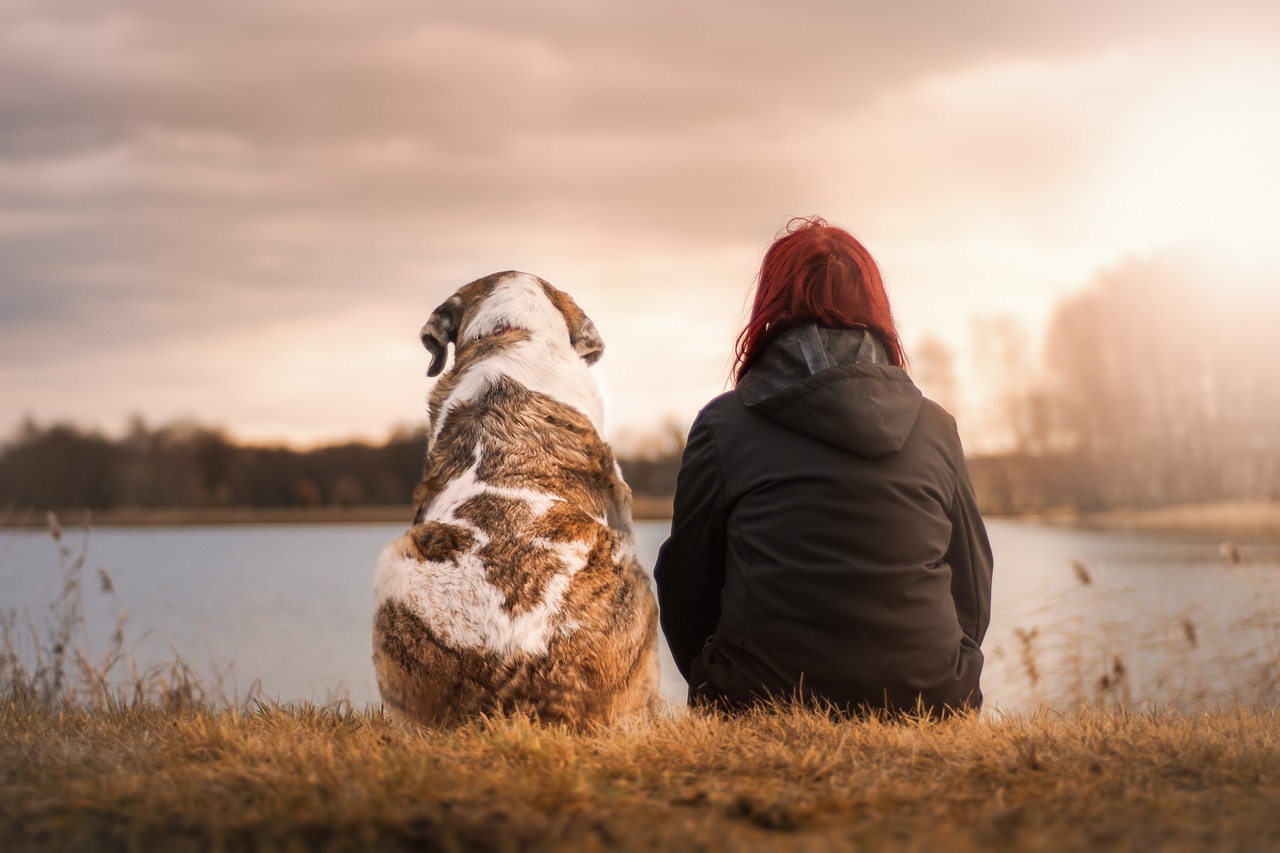
Socialization Strategies
Socialization is a crucial aspect of your dog's training journey. Think of it as giving your furry friend a passport to the world! Just like humans, dogs need to experience different environments, sounds, and other animals to become well-adjusted and confident. Without proper socialization, your dog may react negatively to unfamiliar situations, leading to distractions during walks or playtime. So, how can you effectively socialize your dog? Here are some strategies to consider:
First and foremost, start early. Puppies are like sponges; they absorb everything around them. The critical socialization window occurs between 3 and 14 weeks of age. During this time, expose your puppy to various sights, sounds, and experiences. This can include meeting new people, encountering different animals, and exploring various environments, like parks and busy streets. The more diverse the experiences, the better equipped your dog will be to handle distractions as they grow.
Another effective strategy is to join a puppy socialization class. These classes provide a controlled environment where your dog can interact with other dogs and people. It’s a fantastic way to teach your pup how to behave around others while also reinforcing your training commands amidst distractions. Plus, it’s a great opportunity for you to learn from professional trainers and connect with other dog owners.
As your dog matures, continue to expose them to new experiences. Take them on car rides to different locations, visit pet-friendly stores, and attend local events. Each new outing can be an adventure that helps your dog learn to focus on you, even when there are distractions around. Remember, the goal is to create positive associations with these experiences. If your dog reacts negatively, it can lead to fear rather than confidence.
In addition to real-world experiences, consider using controlled playdates with other dogs. This gives your dog a chance to interact in a safe environment. Monitor their behavior closely to ensure they are comfortable and engaged. If your dog seems overwhelmed, it’s essential to take a step back and gradually reintroduce them to social situations. Just like humans, not all dogs are social butterflies, and that’s perfectly okay!
Lastly, be patient and consistent. Socialization is not a one-time event but an ongoing process. Regularly scheduled outings and interactions will help reinforce your dog's training and keep them focused on you, even when distractions abound. Celebrate small victories, and don’t hesitate to adjust your approach if something isn’t working. Your dog is learning, and every experience counts!
In summary, effective socialization strategies are vital for minimizing distractions and ensuring your dog remains focused during various activities. By starting early, joining classes, exposing them to new experiences, facilitating playdates, and maintaining patience, you can help your dog thrive in a world full of distractions.
Q: How early should I start socializing my puppy?
A: The ideal time to start socializing your puppy is between 3 and 14 weeks of age. This is when they are most receptive to new experiences.
Q: What if my dog is scared of new experiences?
A: Take it slow. Gradually introduce your dog to new situations, and always ensure they feel safe. Positive reinforcement can help build their confidence.
Q: How often should I socialize my dog?
A: Aim for regular socialization opportunities. Weekly outings or playdates can help your dog maintain their social skills and focus.
Q: Can adult dogs be socialized?
A: Absolutely! While it may take more time and patience, adult dogs can still learn to adapt to new experiences and environments.
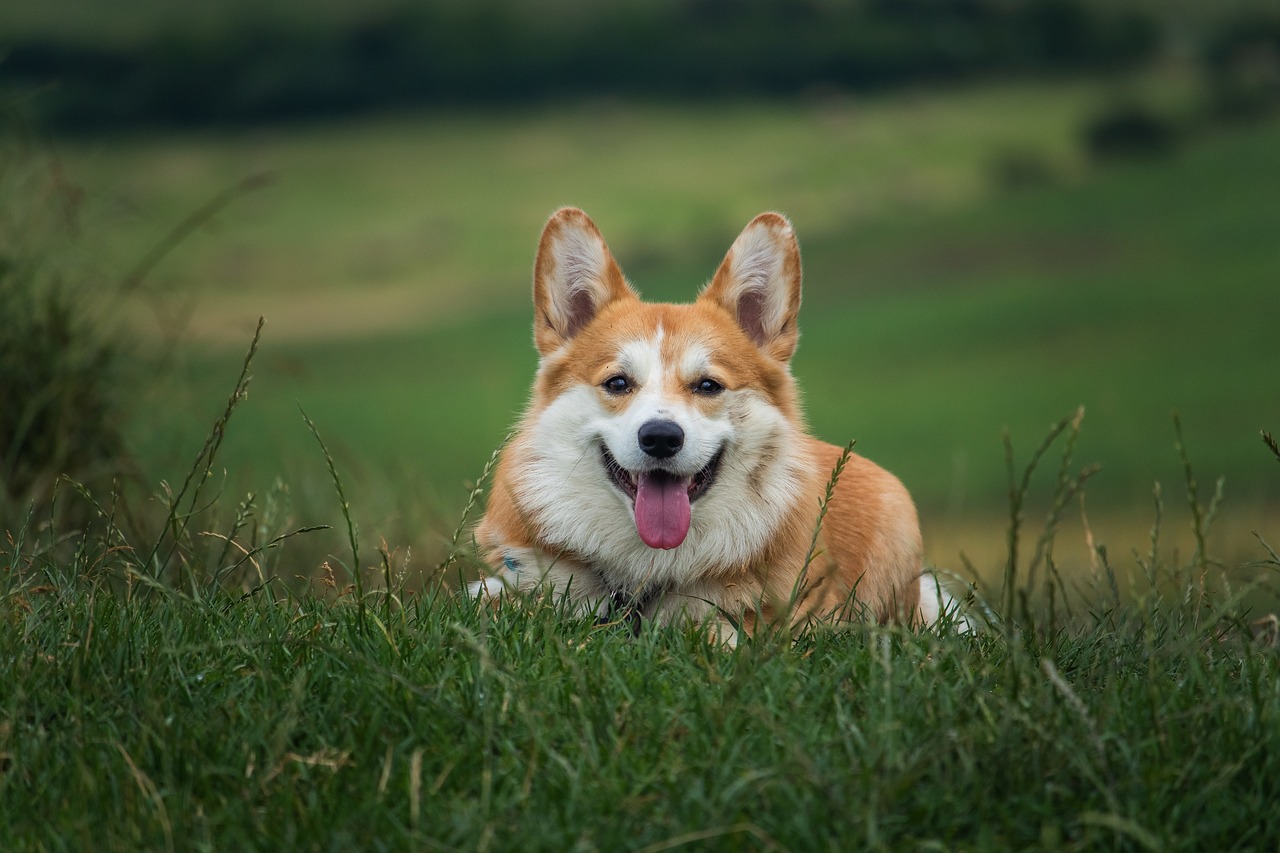
Gradual Exposure to Distractions
When it comes to training your dog to avoid distractions, gradual exposure is an essential strategy. Just like humans, dogs can become overwhelmed if they are suddenly thrown into a chaotic environment. Imagine trying to concentrate on a task while loud music blares in the background; it’s tough, right? The same goes for our furry friends. They need time to adjust to new stimuli. So, how do you implement this gradual exposure effectively?
Start by identifying the specific distractions that affect your dog. Common distractions can include other dogs, people, cars, or even enticing smells. Once you know what tends to catch your dog’s attention, you can create a controlled environment to introduce these distractions step by step. For instance, if your dog is easily distracted by other dogs, begin your training in a quiet area where you can gradually introduce one dog at a time.
Here’s a simple step-by-step approach to help you structure the exposure:
- Step 1: Begin in a low-distraction environment, such as your home or a quiet park.
- Step 2: Introduce a mild distraction, like a toy or a friend walking by at a distance.
- Step 3: Gradually increase the level of distraction. This could mean bringing in more people or dogs, or moving to a busier park.
- Step 4: Always reward your dog for maintaining focus during these exposures. Positive reinforcement is key!
As you progress, monitor your dog’s reactions. If they seem overwhelmed or overly excited, take a step back to a less distracting environment. This is about building your dog's confidence and ability to focus amidst distractions, not rushing the process. Think of it like training for a marathon; you wouldn’t run 26 miles on your first day, right? You’d gradually build up your stamina. The same principle applies to your dog.
Additionally, remember to incorporate short training sessions during these exposures. Dogs have short attention spans, so keeping training sessions brief but frequent can be more effective than long, drawn-out sessions. Aim for about 5-10 minutes of focused training, followed by a short playtime or break. This keeps your dog engaged and eager to learn.
Finally, it’s crucial to stay patient and consistent. Every dog learns at their own pace, and some may take longer to adapt than others. Celebrate small victories along the way, and soon enough, you’ll notice your dog becoming more adept at ignoring distractions. With time and persistence, your dog will not only learn to focus better but will also enjoy the training process!
Q1: How long should I expose my dog to distractions during training?
A1: Start with short sessions of about 5-10 minutes. Gradually increase the duration as your dog becomes more comfortable.
Q2: What if my dog gets too distracted and stops listening?
A2: If your dog loses focus, take a step back to a less distracting environment. It's important to build their confidence gradually.
Q3: Should I use treats during the gradual exposure training?
A3: Absolutely! Using treats as positive reinforcement can encourage your dog to focus on you rather than the distractions around them.
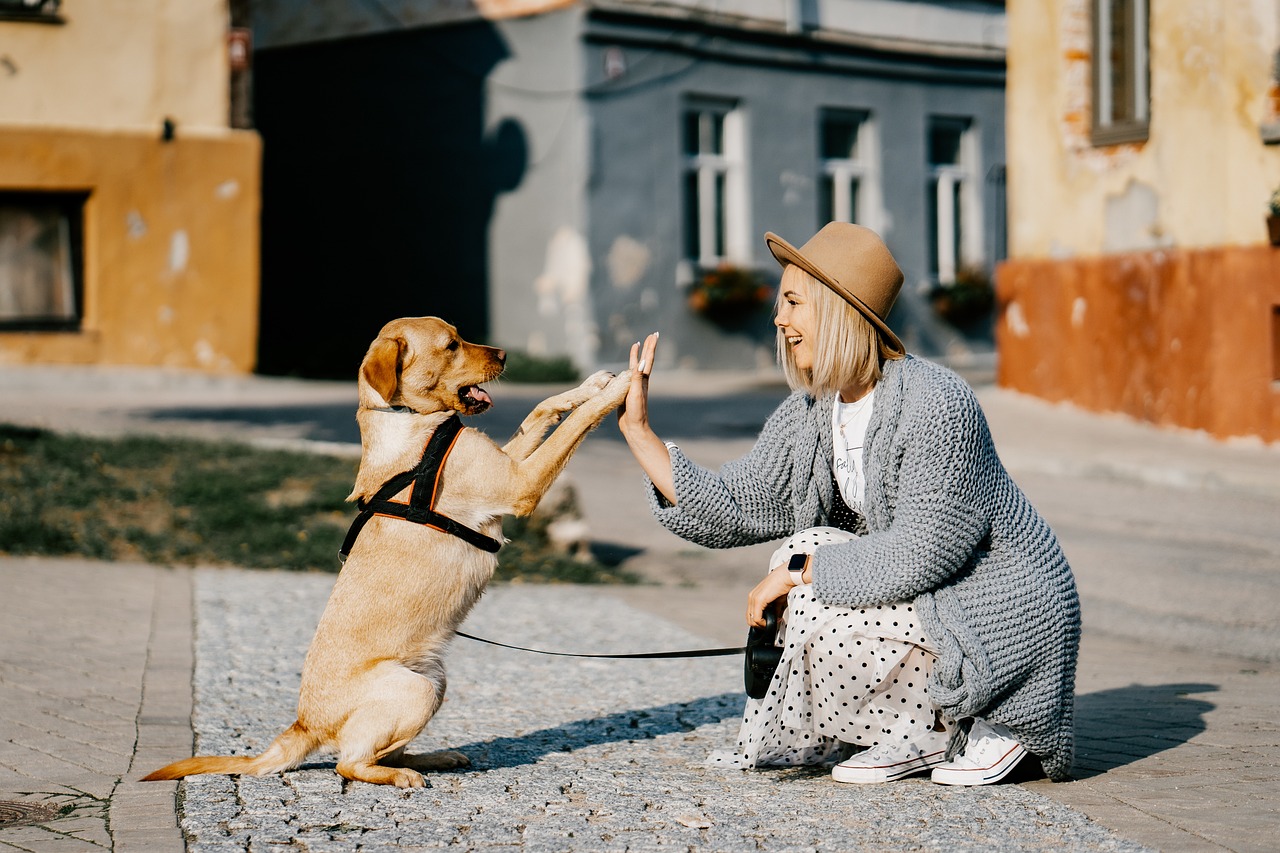
Using Leash Training
When it comes to training your dog, leash training is one of the most fundamental skills you can teach. It’s not just about getting from point A to point B; it’s about creating a connection between you and your dog. Imagine walking through a bustling park, with dogs barking, children playing, and squirrels darting around. Without proper leash training, your dog could easily become overwhelmed and distracted, pulling you in every direction. This is where the magic of leash training comes into play!
First things first, having the right equipment is crucial. A comfortable collar or harness and a sturdy leash can make all the difference. A harness can be particularly beneficial for dogs who tend to pull, as it distributes pressure more evenly across their body. This can prevent injury and make walks more enjoyable for both of you. When selecting a leash, opt for one that’s around 6 feet long; this length gives your dog enough freedom to explore while still allowing you to maintain control.
Next, let’s talk about the actual training process. Start in a quiet environment, free from distractions. This could be your backyard or a calm street. Begin by letting your dog get used to wearing the leash. Allow them to walk around freely, dragging the leash behind them. Once they are comfortable, it’s time to take the next step. Hold the leash firmly but gently, and start walking. If your dog begins to pull, stop immediately. This is where patience comes in—don’t yank on the leash. Instead, simply stand still and wait for your dog to return to your side. When they do, praise them enthusiastically!
As you progress, you can incorporate commands to help reinforce good behavior. For example, when your dog is walking nicely beside you, use the command “heel” to signal that this is the desired position. Over time, your dog will learn that staying close to you is rewarding, especially when you offer treats or verbal praise. Consistency is key here; make sure to practice this command regularly during your walks.
Another effective technique is to change directions suddenly. This keeps your dog engaged and focused on you rather than the distractions around. If your dog starts to pull ahead, simply turn and walk in the opposite direction. This not only helps maintain your control but also teaches your dog to pay attention to your movements. It’s a bit like a dance—one partner leads, and the other follows!
Lastly, don’t forget to celebrate the small victories. Every time your dog walks calmly beside you, give them a treat or some praise. This positive reinforcement will encourage them to continue exhibiting good behavior. Remember, leash training is not just about discipline; it’s about building a trusting relationship with your furry friend.
In summary, leash training is a vital skill that enhances both your dog’s safety and your enjoyment during walks. By using the right equipment, practicing in a distraction-free environment, and employing positive reinforcement, you’ll create a strong bond with your dog while teaching them to focus on you amidst the chaos of the outside world. So grab that leash, and get ready to embark on a journey of fun and connection!
- How long does it take to leash train my dog? The time it takes can vary significantly based on your dog’s age, breed, and prior training. Generally, with consistent practice, you can see improvement within a few weeks.
- What should I do if my dog keeps pulling on the leash? If your dog pulls, stop walking and wait for them to return to your side. Once they do, reward them. This teaches them that pulling won't get them where they want to go.
- Can I use a retractable leash for training? While retractable leashes can be fun, they are not ideal for training because they can encourage pulling. A standard 6-foot leash is recommended for training purposes.
- What if my dog is scared of the leash? Allow your dog to explore the leash at their own pace. Start by letting them wear it indoors for short periods before taking them outside.
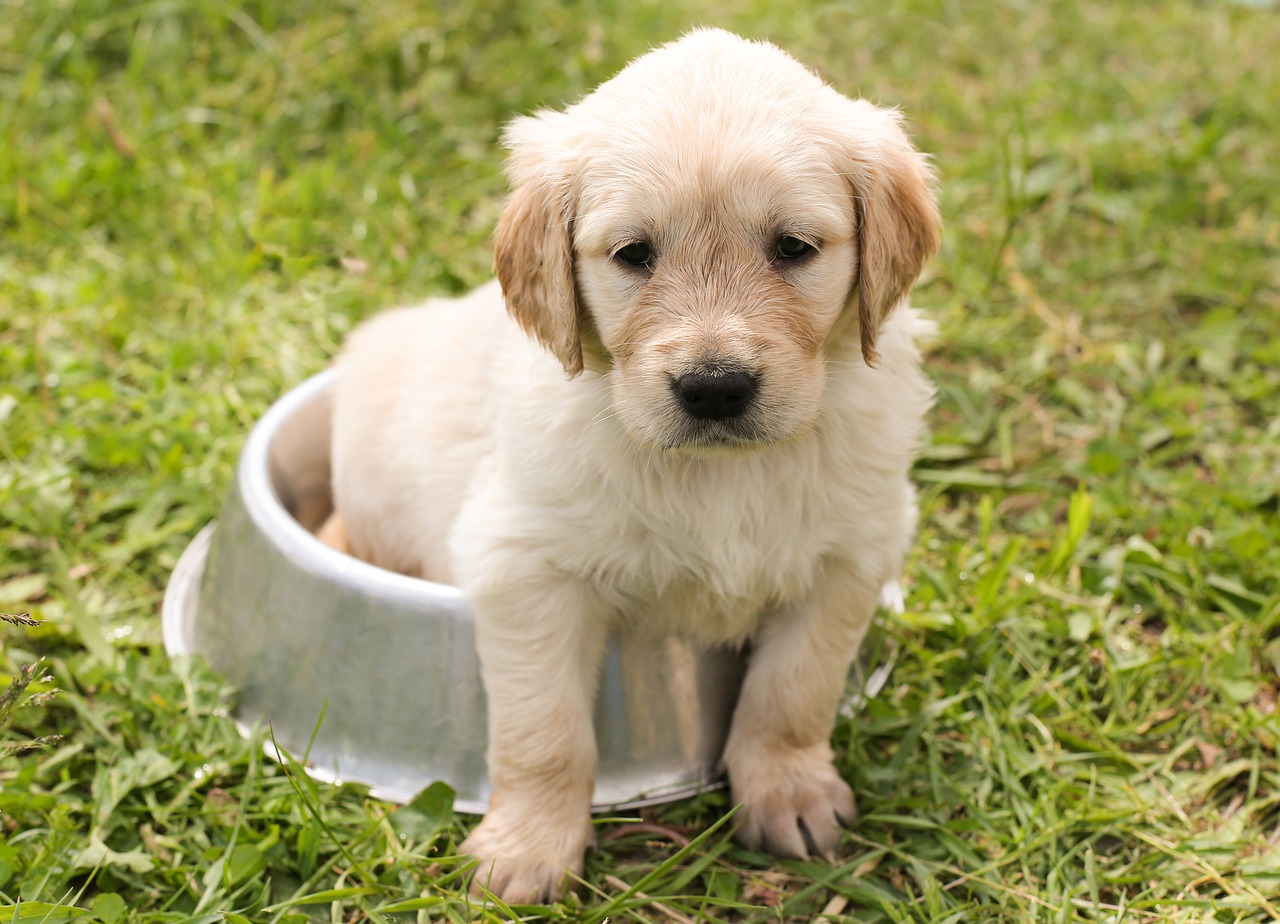
Monitoring Progress and Adjusting Techniques
When it comes to training your dog, monitoring progress is not just an optional step; it's an essential part of the process. Just like we check our progress when learning a new skill, your furry friend deserves the same attention. So, how do you keep tabs on your dog's training journey? It's all about observation, consistency, and being willing to adapt. Take a moment to think about it: if you notice your dog is still distracted during walks despite your efforts, it might be time to reassess your approach.
Start by keeping a training journal. This doesn't have to be anything fancy; a simple notebook will do. Record the dates, the techniques you used, and your dog's responses. This way, you can identify patterns over time. For example, if you find that your dog is particularly distracted by other dogs on a certain route, you can plan your training sessions accordingly. Consistency is key here; the more data you gather, the clearer the picture will become.
Additionally, it’s crucial to evaluate your dog's behavior in different environments. For instance, if your dog can focus at home but struggles at the park, that’s a sign that you need to adjust your techniques. You might want to start training in a less distracting environment before gradually introducing more challenges. This gradual exposure can help your dog build confidence and learn to focus despite distractions.
When adjusting your techniques, consider the following factors:
- Timing: Are you training at the right time of day? Dogs can be more energetic in the morning or after a nap, which may affect their focus.
- Duration: Are your training sessions too long? Shorter, more frequent sessions can often yield better results.
- Rewards: Are the rewards you're using motivating enough? Sometimes, a simple treat might not cut it, and you may need to switch to something your dog finds irresistible.
Remember, training is a journey, not a race. If you notice that your dog is still struggling after you've made adjustments, don't hesitate to seek help from a professional trainer. They can offer tailored advice specific to your dog's needs and behaviors. The goal is to create a positive and rewarding training experience for both you and your dog.
In summary, monitoring your dog's progress and being open to adjusting your techniques is vital for successful training. By staying observant and flexible, you can help your dog overcome distractions and thrive in their training journey.
Q: How often should I monitor my dog's progress?
A: It's a good idea to monitor progress after each training session. Keeping a journal can help you track improvements over time.
Q: What should I do if my dog isn't improving?
A: If you notice little to no progress, consider adjusting your training techniques or seeking assistance from a professional trainer.
Q: Can I train my dog in a busy environment?
A: Yes, but it's often best to start in a quieter setting and gradually introduce distractions as your dog's focus improves.
Q: How do I know if my rewards are effective?
A: If your dog is eager and excited to work for the reward, it's likely effective. If they seem disinterested, try switching to a different reward.
Frequently Asked Questions
- What are common distractions that can affect my dog's focus?
Common distractions include other animals, people, loud noises, and even smells. Understanding what specifically distracts your dog is the first step in training them to maintain focus.
- How often should I train my dog to avoid distractions?
Consistency is key! Aim for short, daily training sessions of about 5 to 10 minutes. Regular practice helps reinforce desired behaviors and keeps your dog engaged.
- What types of rewards are effective for positive reinforcement?
Rewards can vary widely! Treats, praise, playtime, or even a favorite toy can motivate your dog. The key is to find what excites your dog the most and use it during training.
- Which commands should I teach my dog to help with distractions?
Essential commands include "sit," "stay," "leave it," and "come." These commands can help redirect your dog's attention and maintain focus in distracting environments.
- How can I effectively socialize my dog to minimize distractions?
Expose your dog to different environments, people, and other animals gradually. Positive experiences in various settings can help your dog feel more comfortable and less distracted over time.
- What is the best way to introduce distractions to my dog?
Start slowly! Introduce distractions in a controlled environment before gradually increasing the level of distraction. This helps your dog learn to cope without feeling overwhelmed.
- How can leash training help with distractions during walks?
Leash training teaches your dog to walk calmly beside you. This control helps minimize their focus on distractions, making walks more enjoyable for both of you.
- How do I know if my training techniques are working?
Monitoring your dog's behavior is crucial. Look for signs of improvement, such as increased focus and responsiveness to commands. If progress stalls, consider adjusting your techniques.

